Our Las Vegas Podiatrist Provides Winning Solutions to Eliminate Hammer Toe Pain
Hammer toe is a condition that not only looks unsightly but can significantly impact your mobility and quality of life. Fortunately, experienced Las Vegas podiatrist Dr. David Biesinger offers effective solutions to alleviate the discomfort of hammer toe so you can regain your confidence and step back into the action and thrill of Sin City pain-free.
Hammer Toe Symptoms
Hammer toe develops when the middle joint of a toe becomes abnormally bent downward due to a muscle and tendon imbalance around the toe joints. This forces the toe into a hammer or upside-down V shape. Hammer toe most commonly affects the second toe, but it can also occur in the third or fourth toes.
The most common symptoms of hammer toe include:
- A toe that is bent downward at the middle joint
- Redness, pain, or swelling of the toe joint
- Painful calluses or corns on top of the affected toe
- Difficulty wearing shoes due to the toe's abnormal shape
- Trouble straightening the bent toe
Common Causes and Risk Factors for Hammer Toe
There are several potential causes of hammer toe. It is often the result of wearing ill-fitting shoes that are too tight in the toe box and put excessive pressure on the toes over time.
Other risk factors that can contribute to hammer toe development include:
- Injury to the toe joints from trauma
- Diseases that cause nerve or muscle imbalances, like diabetes or rheumatoid arthritis
- Having second toes that are longer than the big toes
- Developing hammer toe with age as muscles and tendons tighten
- Genetics
If left untreated, hammer toe can become more rigid over time, making conservative treatments less effective. We encourage you to seek treatment at the first sign of hammer toe to preserve your mobility and reduce the risk of complications.
Types of Hammer Toe Treatment Options
Depending on the severity of the condition, hammer toe can be treated with both conservative and surgical options. Dr. Biesinger will discuss the different treatment options for hammer toe to determine which one best suits your specific needs and lifestyle.
Orthotics
Mild cases of hammer toe, where the toe is still flexible, can be managed with custom orthotics such as toe splints, pads, or special shoes. Orthotics can help redistribute weight and take pressure off the bent toe joint to prevent further pain and irritation.
Exercises
Toe exercises may also be recommended to strengthen and stretch the affected toe muscles. Simply using your hands to stretch and move the toe gently can increase its flexibility over weeks and months.
Medication
For mild to moderate cases of hammer toe, non-steroidal anti-inflammatory drugs (NSAIDs) can be used to help reduce pain and inflammation in the affected toe. Our podiatrist can administer cortisone injections directly into the affected toe joint to provide temporary relief from pain and inflammation.
In cases where hammer toe is caused by an underlying condition such as rheumatoid arthritis or diabetes, medications to manage these conditions may help alleviate symptoms and slow the progression of the toe deformity.
Surgery
When conservative treatments fail to relieve pain, surgery may be required to correct the hammer toe deformity. After hammer toe surgery, you'll need to wear a special shoe or boot and avoid putting weight on the foot for several weeks. Physical therapy is usually also required to restore strength and flexibility.
